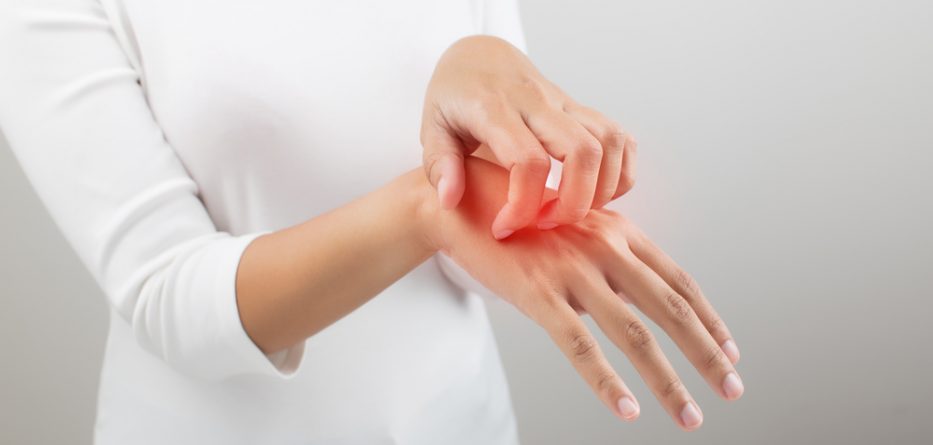Eczema presents itself as itchy, red patches brought on by various types of dermatitis. The reaction pattern consists of red, elevated plaques with crusty, pus-filled blisters. When the blisters break, the affected skin typically weeps and oozes. In chronic eczema, the rashes are less prominent and the skin is thickened, elevated, and scaling instead.
Eczema has been linked to the overproduction of a type of fungus, but eczema is not contagious unless the patient’s rashes have become infected. Most types of eczema can be prevented by keeping the skin healthy and moisturized. Atopic dermatitis is the most common type of eczema. Sadly, eczema is incurable but can be treated with numerous methods that aim to heal damaged skin and alleviate symptoms.
Atopic Eczema (Chronic Eczema)
Atopic dermatitis is primarily genetic and a stubborn, chronic form of eczema. Atopic dermatitis tends to develop early in life, and as children who have atopic dermatitis grow older, their condition may improve. Though, some individuals continue to experience atopic dermatitis symptoms into adulthood. Characteristically, rashes occur on the cheeks, neck, elbow and knee creases, and ankles. Mentioned below are a few of the many treatment approaches.
Atopic Dermatitis Eczema Treatments
NSAID Ointments
Eczema patients have a new anti-inflammatory ointment called Crisaborole available to them. The ointment is free of steroids and can be used up to two times a day. Patients at 2 years of age and over can safely apply this ointment. It restores the skin’s appearance to a healthy state and reduces inflammation.
Phototherapy
Phototherapy is a highly effective therapy that is used to treat severe eczema wherein the affected parts of the skin get exposed to ultraviolet light. Patients must visit the doctor 2-3 times a week for up to 2-3 months for maximum efficacy. Phototherapy has a success rate of 70% among eczema patients. The most commonly used type of ultraviolet light is ultraviolet B.
Skin Care At Home
Skin care is important as well and is usually as simple as implementing a regular moisturizing regimen. It is also recommended that those with a type of eczema avoid wearing clothes with a rough or prickly material. Taking lukewarm baths and applying moisturizer to your skin while your skin’s still damp also works as an effective at-home treatment strategy. You must also avoid scratching your skin and keep your nails short. If your itching is severe, you may inquire your doctor about antihistamines for temporary relief. Running a humidifier can also help in combatting dryness.
Wet Wrap Therapy
Wet wrap therapy is a standard and effective treatment that involves the application of topical medicines or a medicated moisturizer to the affected areas of the skin which are then covered up by a wet cloth which locks the medicinal combination into the skin.
Featured Image:DepositPhotos/ Tharakorn




